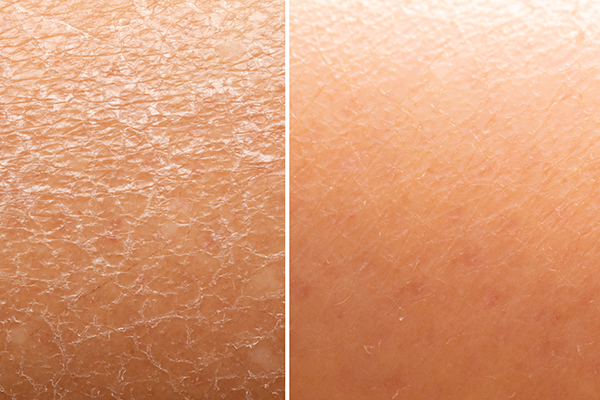Posted by Sweetsation Therapy on 25th Jan 2022
Retinization, or training your skin to use Retinols.
In order to achieve smoother, brighter, fresher, clearer- looking skin your skin needs to speed up the rate at which it creates new skin cells. When we are in our 20s and 30s the full cycle of renewal takes on average 30 days. And as we age it slows down. Retinol is a perfect tool to speed it ap again. But not all skin types can use Retinols right from the start and observe an immediate improvement.
Retinol has been well studied and proven itself in its efficacy as a strong antiaging active that can increase skin cell turnover, boost collagen production, brighten skin, smooth lines and wrinkles, and is considered a key ingredient of efficient acne treatment. But it can throw a royal havoc on your skin if you are not careful. Tip: It’s never a good idea to start a new Retinol treatment a few days before a big event.
If your skin is new to Retinols, start with products with low concentration of Retinol. Something like 0.1%-0.3%. Your skin may and probably will show some signs of feeling dry and peeling at first. Normally it does seem counterintuitive to continue to use a product that causes adverse reaction like redness, irritation, flaking, and peeling - because usually those are all red flags that something is not going right. Not with Retinols though. That is a good sign that a product is working.
That’s where the process of retinization happens. Retinization is a term used by dermatologists to describe the initial adjustment period that people go through when they first start a retinoid treatment. There are ways, however, how this process can go smoothly with minimal setbacks.

Once you start Retinol treatment, your skin will kick into retinization phase and start a new process acting differently than usual. This is why it is essential to introduce it slowly at low dose. The higher the retinoid concentration the more severe your retinization side effects might be. We recommended to start low and then slowly increase your retinoid concentration.
Luckily, this discomfort is temporary. On average, the retinization process can take 2 to 6 weeks, but still varies from person to person depending on many factors, like your age, skin sensitivity and level of skin hydration. To ease your skin into the process, we recommend to apply Retinoid treatment once every 3 days, then every 2 days and after about 3-4 weeks continue every night. You can even mix it with another hydrating moisturizer in a palm of your hand before application, to help your skin to accustom to it faster and gentler.
It’s essential to keep your skin well hydrated during this process. Choose serums that boost hydration, to be applied underneath your Retinol treatment. Look for products containing Hyaluronic acid, Trehalose, Niacinamide and Saccharide Isomerate. Try our BLU’MARINE Pacific – 4D Pro-Collagen Re-Hydration Elixir. It's potent formulation contains all of the mentioned above deep moisture boosters, as well as 4 types of Hyaluronic acid of different molecular weight.
And note that Retinol treatments should be used at night only. Use of a sunscreen is highly recommended during the day. Retinoids make the skin more photosensitive and sun damage can further irritate your skin during the retinization process. Use a daily SPF 30 or higher. Our recommendation is our all natural mineral based Sun Si'belle Broad Spectrum Moisturizing SPF30 Sunscreen Tinted.
Using retinoids requires some patience and commitment but it’s all worth it in the end.
Meanwhile while you are going through the process, avoid using any other exfoliating products or AHAs/BHAs, that can cause further irritation.

